How to Train Clients With a Hip Replacement (Step-by-Step Guide)
Training clients with hip replacements can open up a new client base for a personal trainer. But, it’s important that you have the proper tools to train someone with a hip replacement effectively. Using certain personal training software features can help you train clients with a hip replacement. Find out how to train clients with a hip replacement and learn about what tools you’ll need to train someone with a hip replacement in this step-by-step guide.
- Training clients with a hip replacement includes different levels of exercises depending on their rehabilitative progress.
- When prescribing total hip replacement exercises, you’ll want to avoid hip adduction, internal rotation, or extreme hip flexion.
- Workout software with a customizable exercise library can optimize efficiency while exercise programming for hip replacement clients.
Breaking into training special populations, like training clients with a hip replacement, can be a rewarding way for personal trainers to add a new stream of revenue to their fitness businesses.
To train clients with a hip replacement, it’s important that you’re not only well-versed in hip replacements, but that you have the tools in place to make your training as effective as possible; that’s where personal training software comes into play.
By taking advantage of the features that the best personal trainer software has to offer, you can train clients with hip replacements in a way that works for them, not against them.

To learn more about the Exercise.com personal training software platform, book a demo today!
How to Train Clients With a Hip Replacement
To learn how to train clients with a hip replacement, it’s imperative that you have a thorough understanding of what a hip replacement is and why it’s important to follow certain procedures with these clients.
What is a hip replacement?
A hip replacement, or total hip arthroplasty, is a replacement of the femoral head and the acetabulum which together, allow for normal movement of your leg. Hip replacements are often performed on people with pre-existing musculoskeletal disorders such as osteoarthritis, rheumatoid arthritis, or osteonecrosis, according to Mayo Clinic.
There are different approaches to hip replacements, although a posterior hip replacement is the most common. For those patients, there will be some restrictions post-operation that will need to be considered when developing exercise programming for hip replacement clients.
These clients are advised to avoid flexing the hip beyond 90 degrees. To supplement, clients shouldn’t adduct their replaced hip beyond their midline and they should limit internal rotation. For these reasons, it’s important for people with hip replacements to work with a certified trainer.
Do you need to be certified to train clients with a hip replacement?
Clients with hip replacements may need additional guidance and support post-surgery. While recovery times are better than ever, some patients won’t respond to the surgery as favorably as others.
It’s important to have a basic-level training certification at the very least. It would be preferred to have an advanced certification such as
- ACSM Clinical Exercise Physiologist (EP-C)
- ACE Medical Exercise Specialist
- NSCA Special Populations Specialist (CSPS)
These certifications can help draw in clients that are rehabilitating surgeries like a hip replacement. To your benefit, you’ll also learn appropriate total hip replacement exercises and intensities for different stages of a hip replacement. There are different exercises to do before a hip replacement compared to exercises to do after a hip replacement.
Training Clients After a Hip Replacement
Some clients might be looking for exercises to avoid hip replacement whereas others might be looking for pre-hip replacement exercises. These exercises should help strengthen the hips through all three planes of motion. Simply put, you’ll want to do basic exercises that isolate the muscles surrounding the hip in all directions.
Some examples of exercises to do before a hip replacement include:
- Straight Leg Lifts
- Heel Slides (Heel slides towards buttocks)
- Buttocks Squeezes or Glute Bridges
- Leg Slides (away from body)
- Banded clams
Preoperative hip replacement exercises will vary from person to person depending on ability and pain levels. There are more advanced exercises a patient could perform if they are able, though most people that are anticipating a hip replacement will have some notable limitations.
Postoperative exercises will change depending on which stage of recovery a client’s hip replacement is. During the first few weeks, the body will be working to heal and support the new structures in the hip – at this time, mobility will likely be restricted.
Even so, you can expect to be up and walking the day after your surgery, at the latest. You should be provided some take-home exercises from your surgeon or physical therapist. The exercises will be very similar initially to the exercises provided pre-operation.
Eventually, you should graduate to performing resistance band exercises after hip replacements. Weight training after a hip replacement doesn’t usually begin for about three months after the surgery. When it does, you’ll be emphasizing repetitions instead of load. If you were a powerlifter previously, those days may be in the past.
You’ll want to keep doing hip replacement exercises for long-term stability and quality of life. There are some exercises to avoid after a hip replacement, however. Some of those are listed below:
- Deep Squats
- Advanced Lunges (Lateral, curtsy, etc.)
- Jumping Jacks
- Scissor Kicks
- Reverse Crunches
This is just a small example of exercises that could include contraindicated movements like extreme hip flexion, hip adduction, and hip internal rotation. Even movements like kicking a soccer ball fall within those contraindications.
Clients who have undergone hip replacement surgery require specialized training programs to ensure their safety and optimize their recovery. Understanding the importance of proper training after hip replacement surgery is crucial for trainers and fitness professionals working with these individuals. This article will provide a comprehensive guide on how to effectively train clients with a hip replacement, covering various aspects such as the recovery process, physical therapy, exercise guidelines, common challenges, and much more.
Understanding the Importance of Proper Training After Hip Replacement Surgery
Proper training after hip replacement surgery is essential as it helps clients regain strength, flexibility, and mobility while minimizing the risk of complications. The surgical procedure involves replacing the damaged hip joint with a prosthetic one, and the recovery process can take several months.
Training plays a pivotal role in aiding clients’ rehabilitation journey and restoring their quality of life. It assists in strengthening the surrounding muscles, improving range of motion, enhancing cardiovascular fitness, and restoring balance and stability.
Additionally, proper training after hip replacement surgery can also help clients manage pain and reduce inflammation. By following a structured training program, individuals can gradually increase their activity levels and improve their overall physical function. This can lead to a faster and more successful recovery, allowing clients to return to their daily activities with greater ease and confidence.
Preparing Your Client for Exercise Post Hip Replacement Surgery
Before beginning any training program, it is crucial to ensure that the client has obtained the necessary medical clearance from their healthcare provider. This ensures that their body is adequately healed and ready for physical activity.
Furthermore, it is important to understand the individual’s specific limitations, pain levels, and any existing musculoskeletal imbalances. Conducting a thorough assessment will provide valuable insights into their overall condition, enabling the development of a tailored program that addresses their unique needs and goals.
It is also essential to educate the client about the importance of proper warm-up and cool-down exercises. These exercises help to increase blood flow, loosen muscles, and reduce the risk of injury. Encourage the client to incorporate dynamic stretches and light cardiovascular activities into their warm-up routine, such as walking or cycling. Similarly, emphasize the significance of static stretches and gentle movements during the cool-down phase to promote muscle recovery and prevent stiffness.
Overview of the Hip Replacement Surgery and Recovery Process
Hip replacement surgeries involve removing the damaged parts of the hip joint and replacing them with prosthetic components that mimic the natural joint structure. After the surgery, clients typically spend a few days in the hospital under medical supervision.
Once discharged, the recovery process begins, initially focusing on pain management, wound healing, and gradual reintroduction of functional activities. Physical therapy and rehabilitation sessions are often key components of this process, aiding in restoring mobility, strength, and flexibility.
It is important for patients to follow their surgeon’s post-operative instructions and attend all scheduled follow-up appointments. These appointments allow the surgeon to monitor the healing process and make any necessary adjustments to the treatment plan. During the recovery period, patients may experience some discomfort and swelling, which can be managed with prescribed pain medications and ice packs. It is also crucial for patients to engage in regular exercise and physical therapy to promote proper healing and prevent complications such as blood clots or joint stiffness.
The Role of Physical Therapy in Hip Replacement Rehabilitation
Physical therapy plays a crucial role in hip replacement rehabilitation. It helps clients regain strength, improve joint stability, and restore a full range of motion. Physical therapists use various techniques such as manual therapy, therapeutic exercises, and modalities like heat and ice to facilitate recovery.
As a fitness professional working with clients post-hip replacement surgery, collaborating with physical therapists can be highly beneficial. Understanding their prescribed exercises, precautionary measures, and progressions will enable you to create a cohesive training program that aligns with their clinical goals.
In addition to the physical benefits, physical therapy also plays a significant role in the psychological well-being of individuals undergoing hip replacement rehabilitation. The process of recovering from a major surgery can be challenging both physically and emotionally. Physical therapists provide support, encouragement, and motivation to help clients stay positive and focused on their recovery journey.
Key Considerations for Designing a Safe and Effective Training Program for Clients with a Hip Replacement
Designing a safe and effective training program for clients with a hip replacement requires careful consideration of various factors. Firstly, it is essential to establish clear goals and objectives with the client, taking into account their specific needs, limitations, and desired outcomes.
Secondly, exercises should be carefully selected to minimize stress on the hip joint while still promoting strength, stability, and mobility. Incorporating exercises that target the surrounding muscles, such as the glutes, quadriceps, and hamstrings, can help support the new hip joint and reduce the risk of injury.
In addition, gradually progressing the intensity and complexity of exercises is crucial to prevent overexertion and ensure a safe training experience. Prioritizing proper form and technique throughout the program is also essential to prevent compensatory movements and strain on other areas of the body.
Furthermore, it is important to consider the client’s post-operative rehabilitation protocol and any specific guidelines provided by their healthcare team. This may include restrictions on certain movements or exercises during the initial stages of recovery, which should be taken into account when designing the training program.
Additionally, incorporating exercises that focus on improving balance and proprioception can be beneficial for clients with a hip replacement. These exercises can help enhance stability and reduce the risk of falls, which is particularly important for older adults who may be more prone to balance issues.
Common Challenges Faced by Clients with a Hip Replacement and How to Address Them
Clients with a hip replacement may face various challenges during their rehabilitation journey. These challenges can include pain, muscle weakness, limited range of motion, fear of reinjury, and psychological impact.
To address these challenges effectively, trainers must provide a supportive and empathetic environment. Open communication and regular check-ins allow clients to express their concerns, enabling trainers to adjust the program accordingly.
Furthermore, modifying exercises, incorporating rest periods, and closely monitoring pain levels can help manage discomfort. Encouraging gradual progress, positive reinforcement, and setting realistic expectations are also essential in fostering clients’ confidence and motivation throughout their recovery journey.
Guidelines for Strengthening and Mobilizing the Hip Joint After Surgery
Strengthening and mobilizing the hip joint after surgery are crucial components of the recovery process. However, it is important to implement exercises that avoid excessive stress or strain on the new prosthetic joint.
Low-impact exercises such as gentle range of motion exercises, bridges, leg raises, and clamshells can help strengthen the muscles surrounding the hip joint without compromising its integrity. Gradually increasing resistance and incorporating resistance training equipment, such as resistance bands or light weights, can further progress strength and stability.
Safe and Progressive Exercises to Improve Range of Motion in Clients with a Hip Replacement
Improving range of motion is vital for clients with a hip replacement to regain functional mobility. Implementing low-impact stretching exercises, such as hip flexor stretches, hip rotations, and gentle hip abduction movements, can help promote joint flexibility.
Additionally, utilizing equipment like foam rollers or stability balls to assist in stretching and increasing range of motion can be effective. Encouraging clients to perform these exercises regularly and gradually progress the intensity and duration will yield positive results over time.
Building Lower Body Strength without Compromising the New Hip Joint
Building lower body strength is essential for clients with a hip replacement, as it aids in overall stability, functional movement, and preventing muscle imbalances.
Incorporating exercises that target the glutes, quads, and hamstrings, such as squats, lunges, step-ups, and leg presses, can effectively build lower body strength without compromising the new hip joint. Emphasizing proper form and using appropriate resistance are key to preventing excessive strain on the hip joint.
Tips for Enhancing Balance and Stability in Clients with a Hip Replacement
Enhancing balance and stability is crucial for clients with a hip replacement, as it promotes overall safety and confidence during daily activities.
Including exercises that challenge balance, such as single-leg standing exercises, stability ball exercises, and proprioception drills, can help improve balance and stability. Incorporating progression and variety into these exercises can further enhance clients’ coordination and functional ability.
Incorporating Cardiovascular Exercise into the Training Regimen for Clients with a Hip Replacement
Cardiovascular exercise is an important component of any training program, including those for clients with a hip replacement. It helps improve cardiovascular fitness, aids in weight management, and boosts overall mood and well-being.
Low-impact cardiovascular exercises, such as swimming, cycling, elliptical training, and walking, are generally safe options for clients with a hip replacement. It is important to start with shorter durations and gradually increase intensity and duration as tolerated.
Modifications and Adaptations for Different Fitness Levels and Abilities Post-Surgery
Clients with a hip replacement will have varying fitness levels and abilities, requiring modifications and adaptations to individualize their training programs.
For clients with lower fitness levels, beginning with gentle, low-impact exercises and gradually progressing as their strength and endurance improve is recommended. On the other hand, clients with higher fitness levels may require more challenging exercises and increased resistance to continue progressing.
Tailoring the program according to individual needs and regularly reassessing and modifying exercises will ensure clients consistently challenge themselves without compromising their safety.
Educating Clients on Proper Body Mechanics and Movement Patterns to Prevent Injury or Dislocation
Educating clients on proper body mechanics and movement patterns is crucial to prevent injury or dislocation, especially when performing everyday activities or participating in sports.
Ensuring that clients understand the importance of maintaining proper alignment, core stability, and balanced muscle activation can help minimize excessive stress on the hip joint. Educating them on correct techniques for lifting objects, getting in and out of chairs, and performing functional movements can aid in preventing unnecessary strain or injury.
Strategies to Manage Pain, Inflammation, and Swelling During Training Sessions
Managing pain, inflammation, and swelling is essential during training sessions for clients with a hip replacement. These symptoms can be present, particularly during the initial stages of the recovery process.
Implementing strategies such as incorporating adequate warm-up and cool-down sessions, using ice or cold therapy after exercises, and monitoring pain levels can help manage these symptoms effectively. Encouraging clients to communicate any discomfort and adjusting the intensity or modifying exercises accordingly is crucial for their overall well-being.
Monitoring Progress and Adjusting Training Intensity Based on Individual Recovery Rates
Monitoring progress is vital when training clients with a hip replacement. Each individual will have a unique recovery rate based on factors such as age, overall health, and adherence to the program.
Regular assessments, including functional tests, range of motion measurements, and strength evaluations, can assist in tracking progress and identifying areas that require further attention. Based on this information, continuously adjusting the training intensity, incorporating new exercises, and setting realistic short-term and long-term goals will ensure clients stay motivated and continue to make positive strides in their recovery.
Balancing Strength Training with Flexibility and Mobility Exercises for Optimal Functionality
Striking a balance between strength training and flexibility/mobility exercises is crucial for optimal functionality in clients with a hip replacement.
While strength training helps build muscular strength and stability, flexibility and mobility exercises are essential in maintaining joint health, preventing stiffness, and promoting a full range of motion. Incorporating stretching exercises, foam rolling, and yoga or Pilates movements can enhance flexibility and mobility in conjunction with strength training programs.
Addressing Psychological Factors and Emotional Support During the Rehabilitation Process
Addressing psychological factors and providing emotional support during the rehabilitation process is vital for clients with a hip replacement. Going through surgery and the subsequent recovery process can be physically and emotionally challenging.
As a trainer, fostering a supportive and empathetic environment can help clients navigate any emotional distress they may experience. Actively listening, offering encouragement, and celebrating milestones can significantly impact their overall well-being and motivation to continue their journey towards optimal health and function.
Training clients with a hip replacement requires careful consideration and attention to their unique needs. By understanding the importance of proper training, collaborating with physical therapists, and implementing safe and effective exercise guidelines, trainers can support clients in achieving successful rehabilitation outcomes. By addressing challenges, incorporating comprehensive exercises, and providing emotional support, clients can regain confidence, strength, and functionality, ultimately improving their quality of life post-surgery.
What is the best exercise for someone with a hip replacement?
The best exercises for someone with a hip replacement often include low-impact activities and strength training for the lower body. Walking, swimming, and cycling can all be beneficial for cardiovascular health without putting too much strain on the hip joint. Gentle strength training exercises like leg lifts, knee lifts, and seated leg extensions can help strengthen the muscles around the hip and improve stability.
What exercises to avoid with hip surgery?
After hip surgery, high-impact activities such as running, jumping, or any sport that involves sudden starts, stops, or turns should be avoided. Deep bending at the hip and any movements that involve crossing the legs or twisting at the hip are also typically discouraged.
What positions should you avoid after hip replacement?
After a hip replacement, positions to avoid often include crossing the legs, bending at the hip beyond 90 degrees, and turning the affected foot inward. Sleeping on the side of the replaced hip is also typically discouraged until the surgeon or physical therapist gives the OK.
What are patients usually advised not to do following a hip replacement?
Following a hip replacement, patients are generally advised to avoid high-impact activities, deep bending at the hip, crossing the legs, twisting at the hip, and sleeping on the side of the replaced hip. Lifting heavy items is also typically discouraged until healing has sufficiently progressed. It’s always best to follow the specific advice given by your healthcare provider.
Software Tools for Training Clients With a Hip Replacement
It’s obvious that training a client with a hip replacement requires careful consideration of the client’s new movement restrictions and abilities. Some people are ready to walk immediately after their surgery while others might not feel comfortable for days. This difference might carry into the later stages of the rehabilitation process.
Fitness Assessments for Clients With Hip Replacements
When you first meet your client, you should always conduct a fitness assessment. As it relates to hip replacements, some clients might come to you for help before surgery whereas others will be introduced a couple of months after the surgery. In either case, you’ll need to get a better understanding of how capable your client is.
Exercise.com’s fitness assessment software helps fitness professionals develop, track, and organize assessments for clients of any ability. During the initial stages, trainers will likely be working with hip replacement clients directly to make clear judgment calls while adjusting assessments as needed.
As time progresses, your clients will become more and more independent. In addition, these clients will grow more familiar with the assessment demands and protocols so that they can conduct them without you present. In both situations, you’ll be able to provide your clients with customized fitness assessments that will be logged and tracked to monitor progress.
Customizable Exercise Library for Clients With a Hip Replacement
Earlier, we discussed some commonly prescribed exercises for clients with a hip replacement. We also highlighted a handful of exercises that should be avoided. Even with the best programming, it’s easy for clients to forget what an exercise is or how to do it. For example, names like “banded clams” might not be that easy to recall for newer clients.
What happens if your client wants to exercise on their own? How will they know which exercise to perform and how to perform it right? Exercise.com’s customizable exercise library offers clients the resources they need to better understand an exercise before they do it, even if you aren’t there.
Let’s face it, many people with hip replacements are older adults on a fixed budget. They might not be able to afford one-on-one training three times per week. You can improve your value as a trainer by providing those clients with an informative exercise library complete with descriptions and videos.
Workout Software for Clients With a Hip Replacement
An exercise library is a helpful tool to keep clients informed about how to perform an exercise. To keep them more organized and motivated, they’ll likely need more than exercise descriptions and videos. Combining an exercise library with Exercise.com’s workout software can be an excellent one-two punch that helps clients reach their goals.
Again, not every client will be able to afford your direct services every day. That doesn’t mean you can’t still increase your revenue and provide a top-notch product to your hip replacement clients. Chances are, they will still want guidance. With versatile workout software, you’ll be able to create, send, log, and analyze workouts.
This way, you can provide your clients with the structured workouts they need while assuring they don’t perform any contraindicated exercises, as noted above. You can also use this software to show your clients their progress with various charts and graphics, based on their performance.
To complement these features, your workouts can be created, scheduled, and automated for delivery so you can create workouts at your convenience while delivering them to clients at a time that works for them. You and your client will be able to view the progress so you can adjust workouts as needed.
Over time, your hip replacement client should be able to see changes in the complexity of the workouts compared to the initial stages of their recovery. You’ll be able to show them those progressions and more with unique workout software.
Training Clients With a Hip Replacement: The Bottom Line
Training clients with a hip replacement requires a lot more than just general knowledge. It requires education, empathy, and a host of software tools built with customization and adaptation in mind.
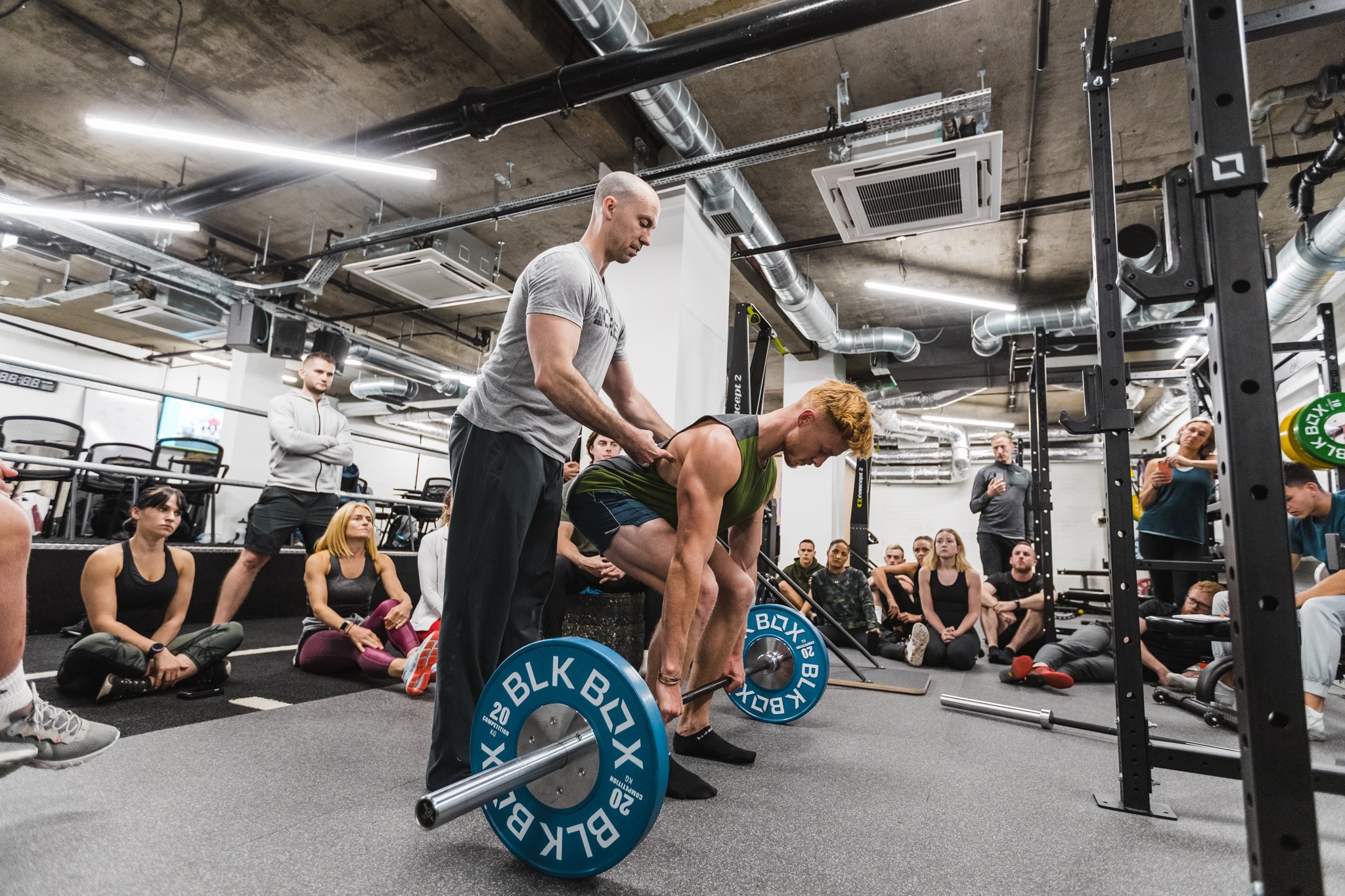
To learn more about how Exercise.com can help you train clients and run your entire fitness business on one software platform, book a demo today!
Creating Training Plans for Clients with a Hip Replacement
Here’s how you can help your clients accomplish their goals by using workout plan creator software to create workout plans, run fitness challenges, offer online workout groups, message clients, and more, all from your very own custom branded fitness apps.
Exercise.com stands out as an all-in-one fitness business management software with comprehensive workout plan sales capabilities. The robust member management, billing & invoicing, and unique fitness assessment tools offer a one-stop solution for fitness business needs. Here’s just some of what you can do with the Exercise.com platform:
Engage with clients via automations.
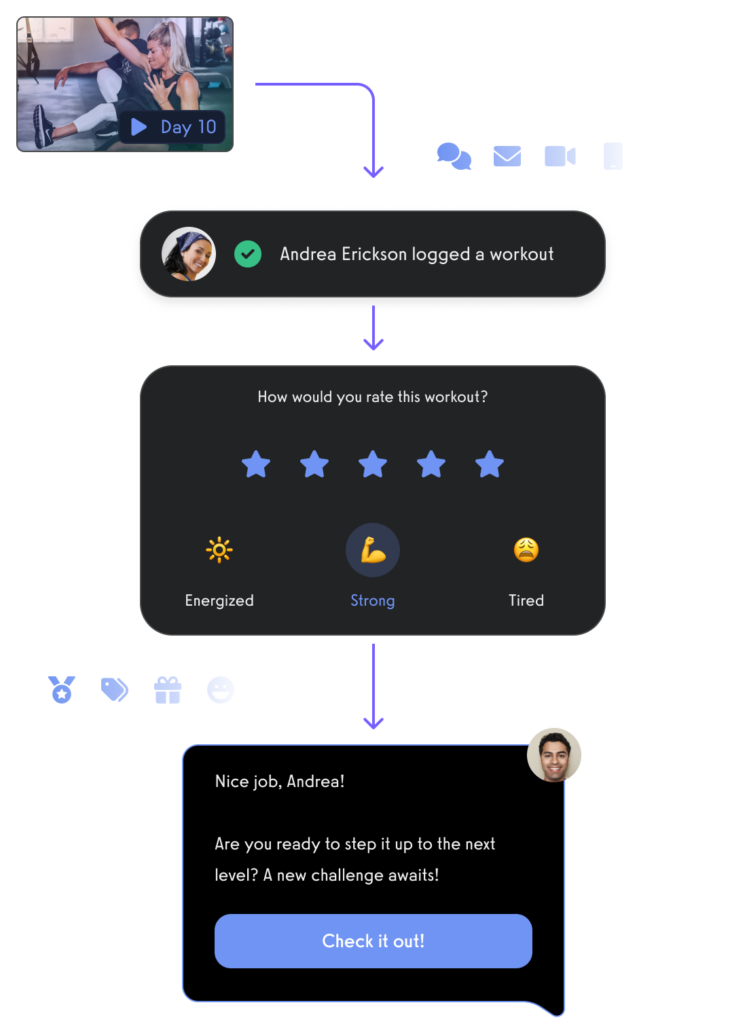
Manage leads with a fitness CRM.
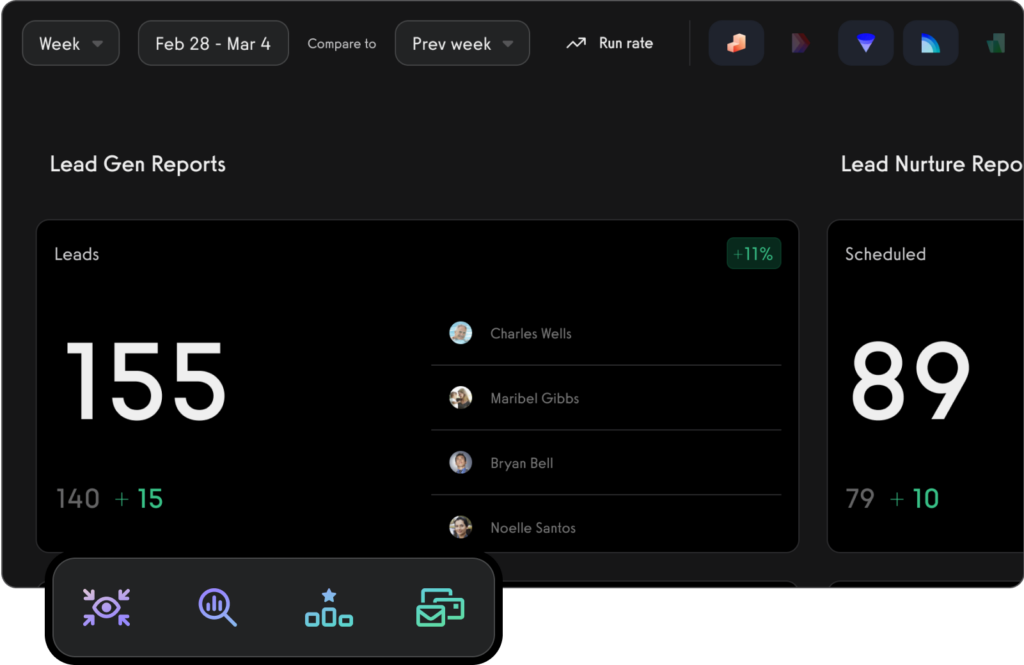
Create and send fitness assessments with ease.

Use fitness habit tracking to inspire and motivate personal training clients (in-person and remote).

Use fitness progress photos to engage with clients.
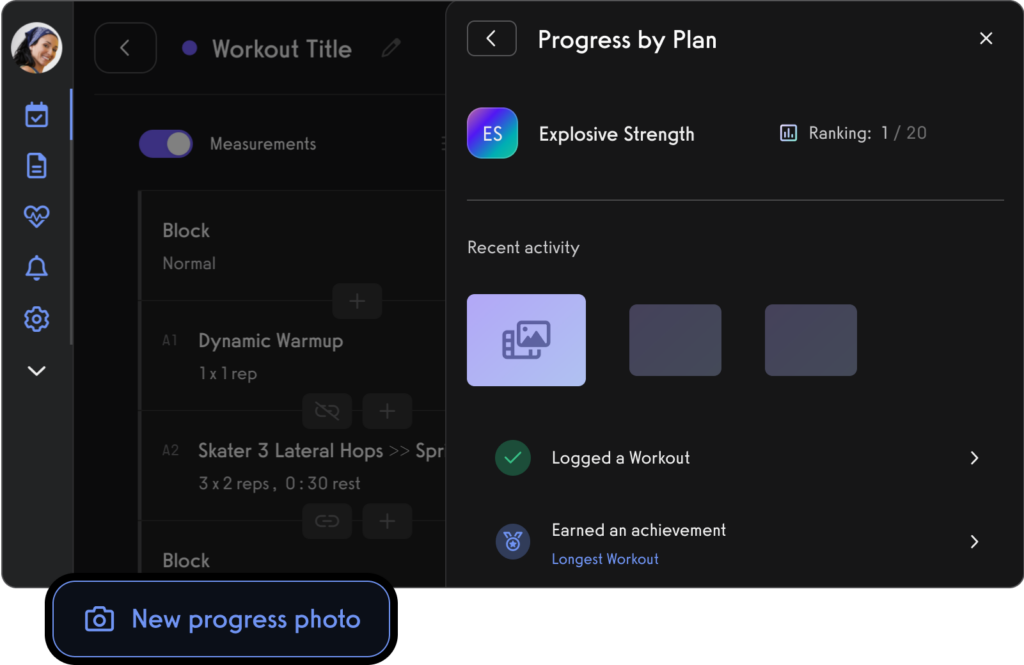
Use fitness leaderboards to track performance and inspire healthy competition.

Use the exercise demonstration video library or create your own custom exercise demonstration videos.

Create workout plans for parents and dependents, teams and more.

Manage personal training clients with ease.

Book appointments for clients (Read More: Best Gym Booking Software)

Create classes and fitness groups

Manage fitness challenges (Read More: 100+ Fitness Challenge Ideas)
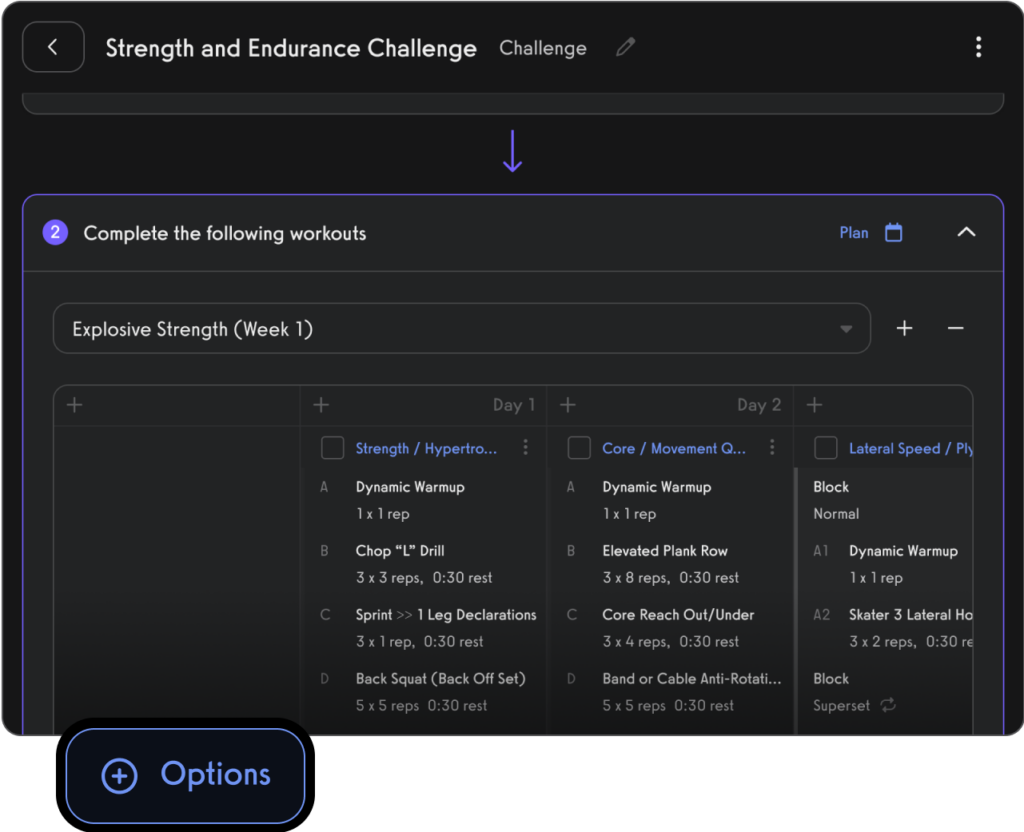
Process payments for open gym, classes, and personal training.

Communicate with gym members, athletes, team members, personal training clients, class members, parents, and dependents via SMS, email, and in-app push notification.

View performance over time, track personal records, and other fitness stats with performance reporting dashboards.
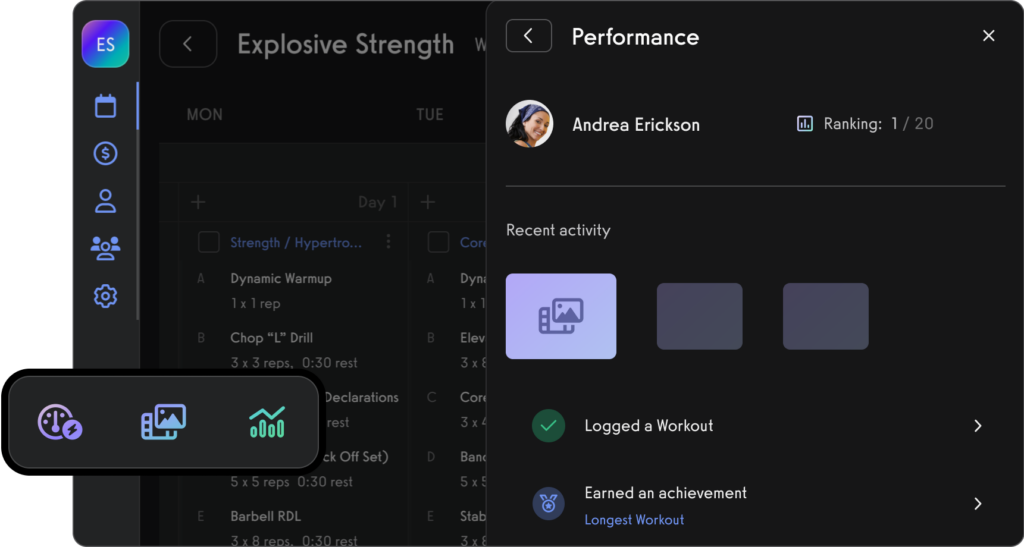
And of course, view all of your fitness business reports easily too.

All from your custom-branded fitness apps (Read More: Best Gym Mobile Fitness Apps Software)


Want to learn how your fitness business can take it to the next level? Get a demo now!
References:









